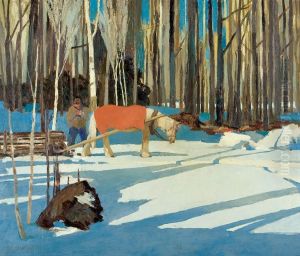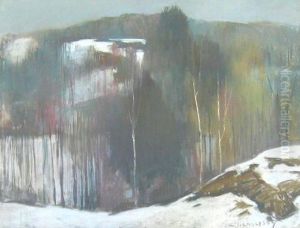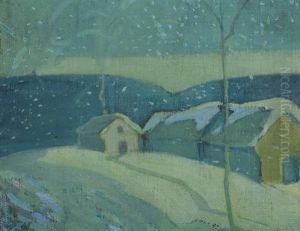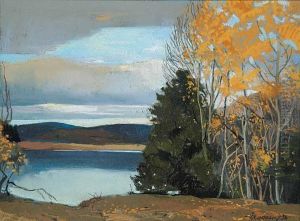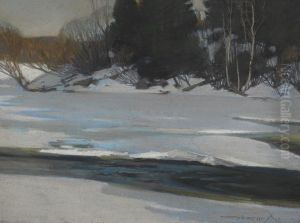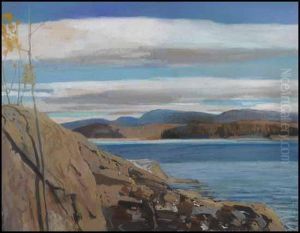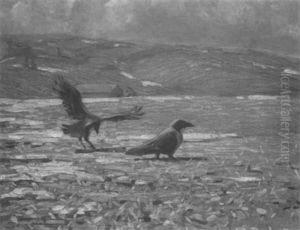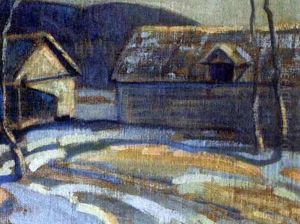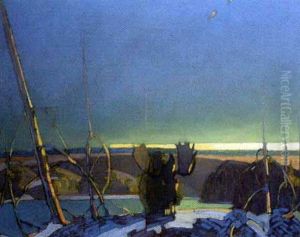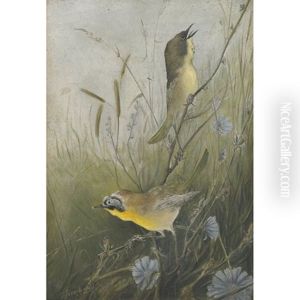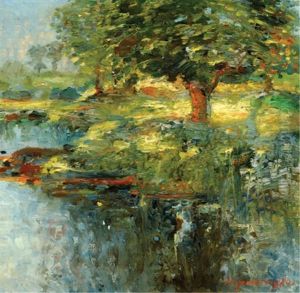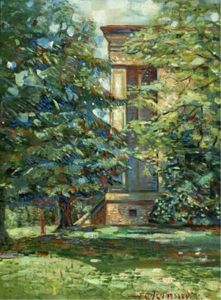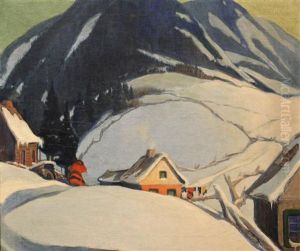Frank Charles Hennessey Paintings
Frank Charles Hennessey was a Canadian artist, born on December 25, 1894, in Ottawa, Ontario. He was known for his significant contributions to the Canadian art scene, particularly in the early 20th century. Hennessey's work primarily focused on landscapes, which he rendered in a distinctive style that captured the essence and beauty of the Canadian wilderness. His approach to painting was influenced by the Impressionist movement, although he also integrated elements of Realism, creating a unique blend that was both evocative and highly detailed.
Hennessey received his formal art education at the Ottawa Art Association and later at the Art Association of Montreal, where he was influenced by other Canadian artists and European art trends of the time. Despite his traditional training, Hennessey was innovative in his techniques and choice of subjects, often exploring the interplay of light and shadow in his landscapes, and focusing on the changing seasons of the Canadian outdoors.
Throughout his career, Frank Hennessey exhibited his work in various galleries and shows across Canada, gaining recognition for his artistic talent and his ability to capture the spirit of the Canadian landscape. His paintings are characterized by vibrant colors, meticulous attention to detail, and a deep appreciation for nature, traits that made his work popular among art collectors and the general public alike.
Unfortunately, Frank Charles Hennessey's life and career were cut short when he died on March 23, 1941, in Ottawa. Despite his relatively brief career, Hennessey left behind a legacy that continues to influence Canadian landscape painters. His works are part of collections in several Canadian museums and galleries, where they are celebrated for their contribution to the country's artistic heritage. Hennessey's dedication to exploring and depicting the Canadian landscape has cemented his place as an important figure in Canada's art history.
